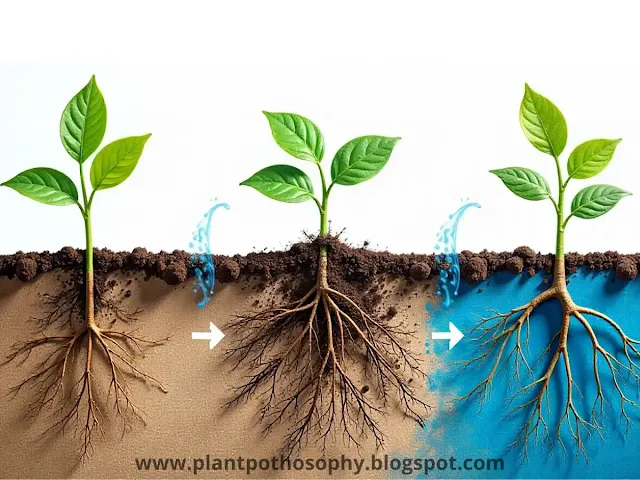The Science of Watering: How to Hydrate Your Plants Like a Pro
Watering Wisdom: The Science of Hydrating Your Plants Effectively
Watering your plants seems simple—just pour and go, right? Not quite. The way you hydrate your plants directly impacts their health, growth, and resilience. Understanding the science behind watering can turn you from a casual plant owner into a true plant expert.
The Role of Water in Plant Health: Plants rely on water for nutrient absorption, photosynthesis, and cell structure. Water transports essential minerals from the soil to the roots and up through the plant. However, improper watering can lead to issues like root rot, fungal infections, or dehydration.
Understanding Soil Moisture & Drainage: Soil composition plays a major role in how much water your plant needs. Well-draining soil allows oxygen to reach roots, preventing waterlogging. To check moisture levels, stick your finger into the soil up to an inch deep—if it’s dry, it’s time to water.
Timing & Frequency: The best time to water is in the morning, allowing
plants to absorb moisture before the sun evaporates it. Frequency depends on factors like plant type, humidity, temperature, and soil type. Overwatering is one of the biggest killers of houseplants, so always assess before watering rather than following a rigid schedule.
The Right Way to Water: For most
plants, deep watering is best—soak the soil thoroughly until excess water drains out, encouraging deep root growth. Avoid wetting leaves unnecessarily, as this can lead to fungal issues. For humidity-loving
plants, misting or using a pebble tray can provide additional moisture.
Special Considerations for Different Plants
- Succulents & Cacti: Water sparingly, letting soil fully dry between waterings.
- Tropical Plants: Prefer consistently moist soil, but not soggy.
- Ferns & Calatheas: Thrive in higher humidity, so consider misting or using a humidifier.
Smart Watering: How to Keep Your Plants Thriving
Smart watering is about more than just frequency—it’s about understanding the needs of your
plants and tailoring your approach accordingly. Different
plants have different water requirements, and factors like humidity, temperature, soil type, and seasonality all play a role. The key to smart watering is striking a balance between hydration and aeration, ensuring roots receive enough moisture without becoming waterlogged. Using self-watering pots, moisture meters, or even observing leaf behavior can provide valuable clues about when to water. Additionally, incorporating techniques like bottom watering for moisture-sensitive
plants or deep watering for drought-resistant species can optimize absorption and promote strong root systems. By fine-tuning your watering habits and paying attention to plant signals, you can create a thriving indoor or outdoor garden with lush, healthy foliage.
From Root to Leaf: The Best Way to Water Your Plants
Watering isn't just about keeping soil damp; it's about ensuring water reaches every part of the plant in the right way. Roots are the primary site of water absorption, so proper watering starts with making sure they receive deep, thorough hydration. Shallow, frequent watering can lead to weak, surface-level roots that make
plants more susceptible to drought. Instead, deep watering allows moisture to penetrate the soil and encourages strong, deep root systems. Equally important is avoiding stagnant water, which can suffocate roots and lead to rot. Beyond the roots, leaves play a crucial role in moisture management. While some
plants benefit from occasional misting, others—especially those prone to fungal diseases—thrive best when their foliage remains dry. Watering techniques such as bottom watering, slow soaking, and using room-temperature water can all contribute to a plant’s overall health. By taking a root-to-leaf approach, you ensure that your
plants receive the hydration they need without the risks of overwatering, dehydration, or disease.
The Art & Science of Watering: A Guide for Healthy Plants
Watering is both an art and a science, requiring a balance between knowledge and intuition. Scientifically,
plants need water for vital processes like photosynthesis and nutrient transport, but the way water is delivered can make all the difference in plant health. The artistic side of watering involves reading plant cues—wilting leaves, yellowing foliage, or dry soil—and responding accordingly. Using the right method, such as watering at the base of the plant, allowing for proper drainage, or grouping humidity-loving
plants together, can enhance plant growth and longevity. Different species have unique hydration needs, and a thoughtful, personalized watering approach will help prevent common problems like overwatering, root rot, and dehydration. By combining scientific principles with careful observation, you can master the art of watering and ensure your
plants flourish.
Mastering Moisture: The Science Behind Proper Plant Hydration
Moisture management is one of the most crucial aspects of
plant care, yet it is often misunderstood. Water is essential for nutrient transport, cellular functions, and maintaining structural integrity, but too much or too little can be detrimental. Understanding how soil retains moisture is key to watering effectively. Clay-heavy soil holds water for extended periods, which can lead to root rot if drainage is inadequate, while sandy soil drains too quickly, risking dehydration. The best approach is to tailor watering techniques based on soil type and plant species. Using a moisture meter or performing a simple touch test—feeling the soil a couple of inches below the surface—can help determine when it's time to water. Additionally, environmental factors such as humidity, temperature, and air circulation all influence how quickly soil dries out. Grouping
plants with similar water needs together, using mulch to retain moisture, and ensuring proper drainage can all enhance hydration efficiency. By mastering moisture control, plant owners can prevent common watering mistakes and create optimal growing conditions for a wide range of
plants.
Conclusion
Mastering the art of watering takes observation and adjustment. Every plant has unique needs, and understanding the balance between hydration and drainage is key to their longevity. By following these science-backed watering techniques, you’ll ensure your
plants stay healthy, vibrant, and thriving for years to come.

